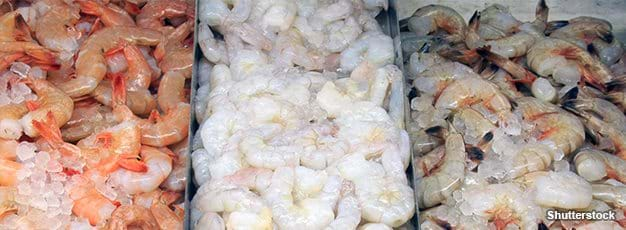Consumers Appear Indifferent to Country-of-Origin Labeling for Shrimp

Under the Tariff Act of 1930 and subsequent amendments, consumer-ready packaged foods must indicate whether the foods come from the United States, from another country, or from mixed origins. Until the last several years, random-weight products, such as loose produce, store-cut and packaged meats, and seafood from a store's fish counter, were not required to have country-of-origin labels. Proponents of these labels assert that consumers view the U.S. label as an indication of safety, quality, or as a means of supporting U.S. producers.
In April 2005, fish and shellfish became the first commodities subject to mandatory country-of-origin labeling (COOL). In March 2009, rules became final requiring COOL for red meat, chicken and goat meat, fresh and frozen fruit and vegetables, peanuts, pecans, macadamia nuts, and ginger. ERS researchers explored whether U.S. consumers adjusted their purchases of shrimp in response to the 2005 COOL requirements for seafood. Findings show that consumers were not responsive to the new country-of-origin labels.
Shrimp was chosen for the study for a variety of reasons. Fish and shellfish were the first commodities to fall under COOL requirements. Shrimp is the most popular seafood in the United States, accounting for a quarter of all seafood consumed. Seafood from Southeast Asia, particularly shrimp, has a history of raising food safety concerns, so consumers may be looking for country-of-origin information. The different ways that shrimp is sold to consumers--random-weight shrimp purchased from a fish counter versus consumer-ready packaged shrimp--allow researchers to observe if there are shifts in purchases in response to COOL. Consumer-ready packages of shrimp have carried country-of-origin labels for many years. This information was not required for random-weight shrimp until early 2005.
The researchers used weekly Nielsen Homescan purchase data for 1998-2006 to track household purchases of three distinct products: random-weight shrimp purchased from the fish counter, frozen bagged shrimp, and frozen bagged and breaded shrimp. To isolate the impact of the new COOL, the researchers accounted for the effects of price, consumers' budgets, seasonality, purchasing trends, and demographic characteristics affecting demand for shrimp. If COOL mattered to consumers, shrimp purchases after the rule's April 2005 implementation would have shifted between the types of products. Instead, no such demand shift was observed.
The researchers repeated the study using just households in which at least one household head had attended college, graduated from college, or received an advanced degree. Findings from past studies on nutrition labeling suggest that more educated consumers are more likely to read food labels. This subset of consumers did not alter their shrimp purchases in response to COOL either.
The implications of the research suggest that price is a more important determinant of buyer behavior than COOL, a finding consistent with various consumer surveys. Consumers may also feel that retail outlets, the brand of fish, or existing health and safety regulations provide adequate assurance of the quality and safety of the product without having to rely on country-of-origin labels.
'Do Consumers Respond to Country-of-Origin Labeling?', Journal of Consumer Policy, December 2010, Vol. 33, pp. 323-337

